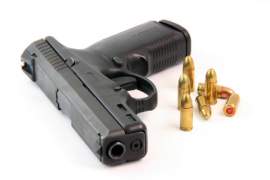
National Firearms Act Overview

The National Firearms Act was originally enacted in 1934. The act included an excise tax on certain weapons when they were manufactured or transferred between individuals or entities. In addition, the National firearms Act also included the requirement that certain firearms be registered, so that the owner of a numbered weapon was on record. Serial numbers are the easiest way to identify the owner of weapons.
The National Firearms Act included the implementation of a registry, which includes the names of the current and previous owners of each numbered gun. In addition, those that wish to travel with a gun across state lines, must register that movement with the same registry. This is done to keep track of weapons in the country, as well as ensure compliance with local and federal gun laws.
The firearms act was first enacted after prohibition. The Firearms Act was meant to ensure some governmental control over gun ownership in the country. While each state has its own gun laws, the federal government has laws which supersede those laws. However, some states prohibit citizens from carrying a concealed weapon, while others allow it. Since these laws can be confusing, it is best that individuals first register any movement with the weapon across state lines, but that they also research applicable laws in that state.
Firearms laws vary across the country, but regardless of local laws, the firearms act ensures that each weapon is registered with the government and can be traced to the owner.
NEXT: Quick Overview on Concealed Carry Laws





















